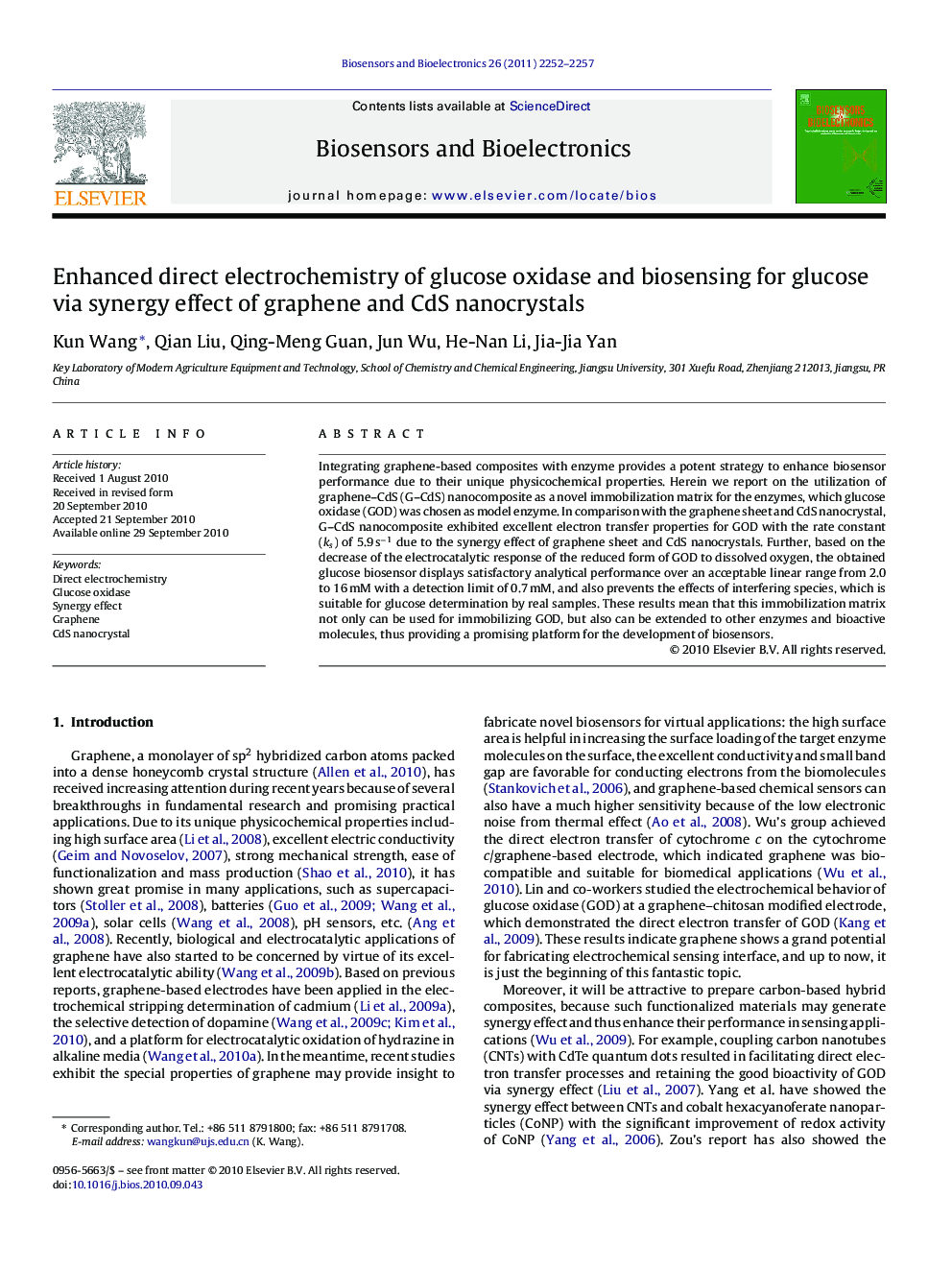| Article ID | Journal | Published Year | Pages | File Type |
|---|---|---|---|---|
| 868188 | Biosensors and Bioelectronics | 2011 | 6 Pages |
Integrating graphene-based composites with enzyme provides a potent strategy to enhance biosensor performance due to their unique physicochemical properties. Herein we report on the utilization of graphene–CdS (G–CdS) nanocomposite as a novel immobilization matrix for the enzymes, which glucose oxidase (GOD) was chosen as model enzyme. In comparison with the graphene sheet and CdS nanocrystal, G–CdS nanocomposite exhibited excellent electron transfer properties for GOD with the rate constant (ks) of 5.9 s−1 due to the synergy effect of graphene sheet and CdS nanocrystals. Further, based on the decrease of the electrocatalytic response of the reduced form of GOD to dissolved oxygen, the obtained glucose biosensor displays satisfactory analytical performance over an acceptable linear range from 2.0 to 16 mM with a detection limit of 0.7 mM, and also prevents the effects of interfering species, which is suitable for glucose determination by real samples. These results mean that this immobilization matrix not only can be used for immobilizing GOD, but also can be extended to other enzymes and bioactive molecules, thus providing a promising platform for the development of biosensors.
